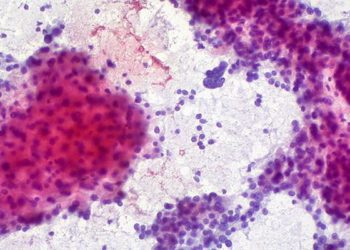Prognostic nomograms predict survival after chemoembolization of hepatocellular carcinoma
1. This study established a simple, graphically-based prognostic nomogram for overall and progression-free survival in patients with non-metastatic hepatocellular carcinoma following chemoembolization. The model had good discrimination and calibration abilities for both 3- and 5-year survival.
Evidence Rating: 2 (Good)
Study Rundown: There have been a variety of individual factors that have been identified as important prognostic indicators in patients who have undergone transarterial chemoembolization for hepatocellular carcinoma (HCC). However, given the heterogeneity of the populations studied, a consensus list of prognostic factors for overall survival (OS) and progression free survival (PFS) have not been determined in chemoembolization patients. This study retrospectively identified 1181 patients with nonmetastatic HCC who underwent transarterial chemoembolization and assigned them to either a derivation or validation group for the evaluation of covariates and their association with OS and PFS. Nomograms were mathematically based on the variables that were most predictive of OS and PFS, with adequate levels of discrimination and goodness-of-fit for both 3- and 5-year survival. The nomograms developed in this study incorporated multiple factors that previously required individual consideration to estimate their weighting on individual patient outcomes. These nomograms are graphic indicators of the potential benefit of a given chemoembolization procedure and may aid the clinician in determining individualized follow-up plans for a given patient based on their unique clinical picture. This study was limited by the homogeneity in the population, the homogeneity of the intervention as only one type of chemoembolization technique was used, and baseline differences in demographic data between the derivation and validation groups that may limit the generalizability of these results. Future studies should expand these nomograms to a more heterogenous population in order to increase their clinical utility.
Click to read the study in the Journal of Interventional Radiology
Relevant reading: How to decide about liver transplantation in patients with hepatocellular carcinoma: size and number of lesions or response to TACE?
In-Depth [retrospective cohort]: A Cox proportional hazards model was used to derive the a model for predicting 5-year OS and 3-year PFS from a set of predictors previously identified as significant from the literature. Random forest modeling was utilized to select variables. Of the 1181 patients that were identified, 854 were used for the derivation cohort, while 327 patients were used for the validation cohort. The 5-year OS rate was 25.4% based on the derivation set, and 3-year PFS was 20.8%. The variables that were identified as statistically and clinically significant included tumor volume, tumor number, tumor type, Child-Pugh class, alpha-fetoprotein, and portal vein invasion. The models derived for OS and PFS had a C-index of 0.80 (5-y survival) and 0.77 (3-y progression), which were externally validated based on the validation cohort.
Image: PD
©2015 2 Minute Medicine, Inc. All rights reserved. No works may be reproduced without expressed written consent from 2 Minute Medicine, Inc. Inquire about licensing here. No article should be construed as medical advice and is not intended as such by the authors or by 2 Minute Medicine, Inc.




![Engineered stem cells mitigate liver damage caused by radiation [PreClinical]](https://www.2minutemedicine.com/wp-content/uploads/2014/12/Human_embryonic_stem_cells-75x75.png)